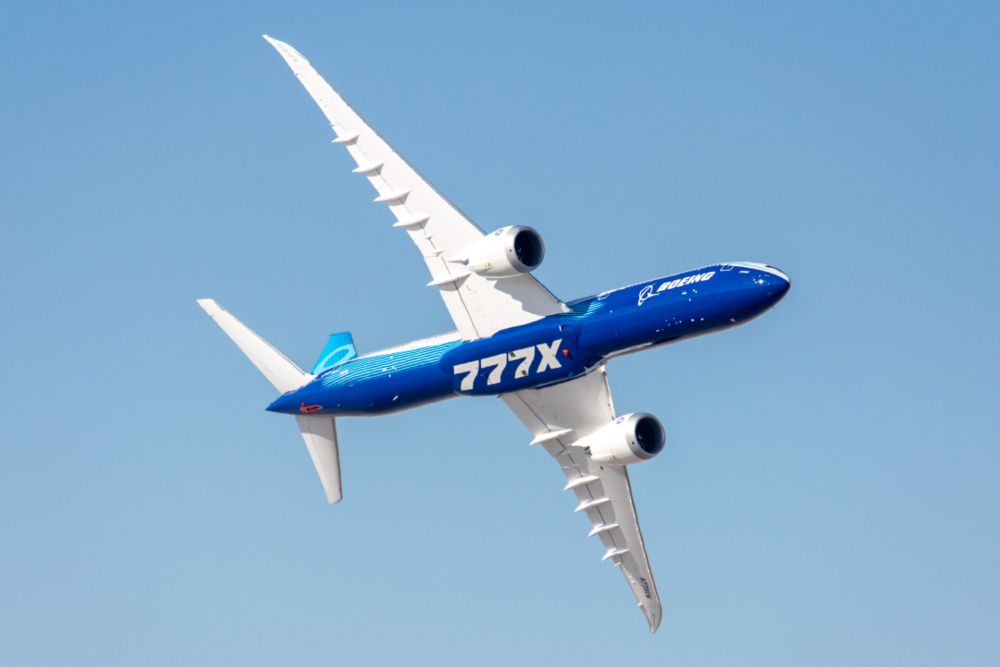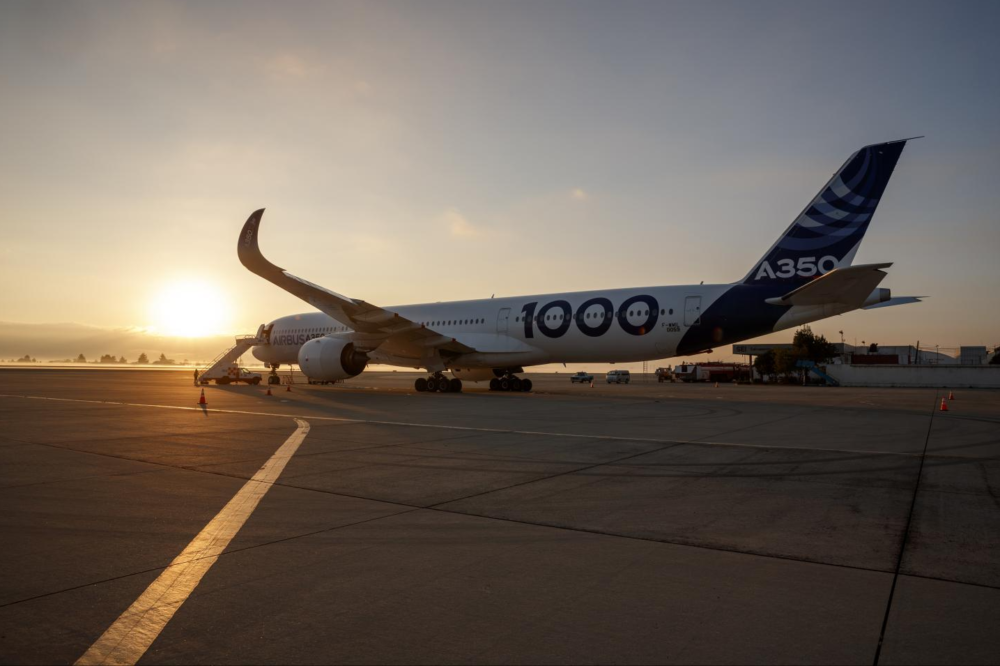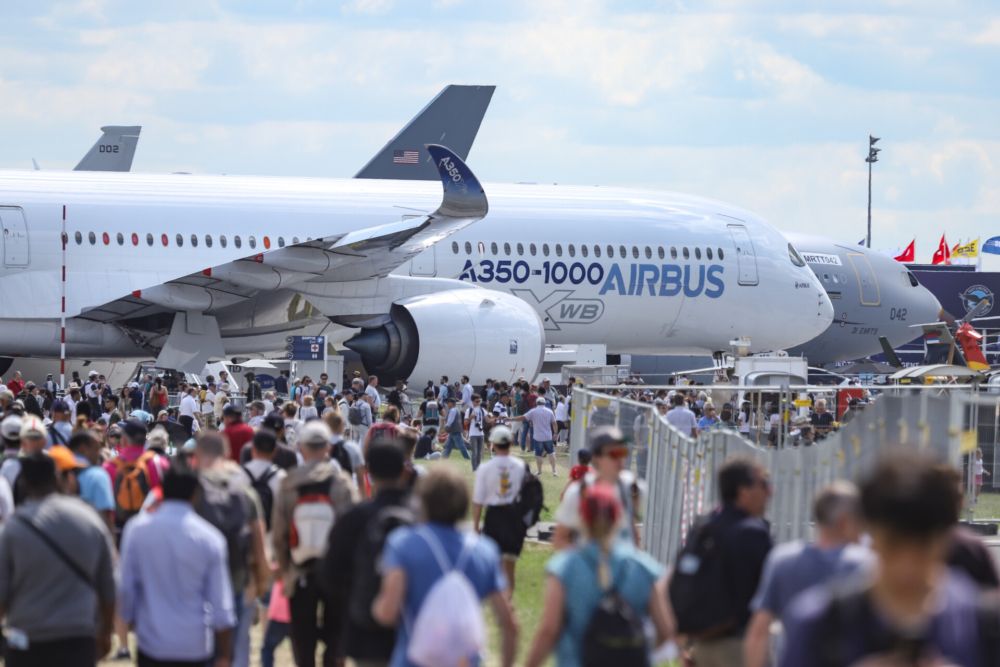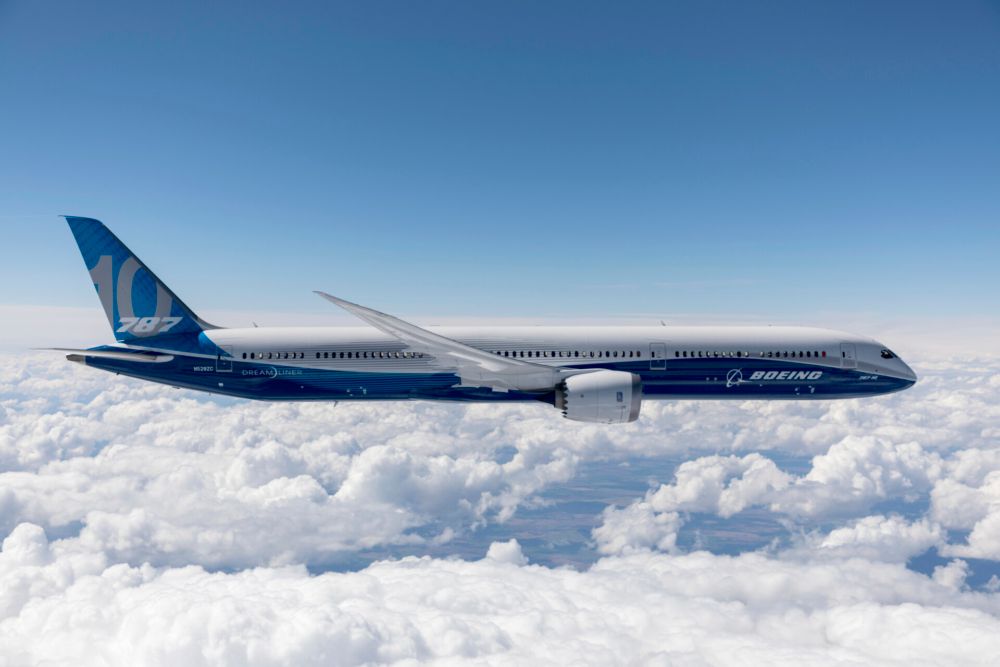The Airbus A350-1000 and the Boeing 777X are the largest twin-engined jet aircraft in the sky. The latter should have entered into service by now. However, due to repeated delays, the first deliveries are currently scheduled for 2023. Long-haul demand is predicted to have made at least a partial comeback by then. Does that mean that Airbus could revisit the idea of an A350-2000 to compete against Boeing's new flagship? Let's take a look at what that could entail.
The potential project
Once upon a time (about five years ago), Airbus hinted it could be looking at a stretched version of its A350-1000 to challenge Boeing's forthcoming 777X. If kept within specific parameters, it is an entirely feasible project and one that would not even require too much reengineering.
A four-meter stretch of the fuselage from its current 73.88 meters would keep the plane within the limit of four pairs of exit doors. This would add another four rows and 45 seats. Furthermore, according to estimates from Leeham News at the time, it would only increase the maximum take-off weight (MTOW) by 11 tons, keeping it within the thrust capabilities of current Rolls-Royce XWB engines.
A potential stretched A350 would also have an empty weight of about 25 tons less than the 777-9, making it an attractive alternative from the point of view of fuel consumption. Adding 45 more seats to an average layout of the A350 would take it from approximately 370 seats to 415. This could land it smack in the middle of the 777-9s 406 to 425 passenger range.
Stay informed: Sign up for our daily and weekly aviation news digests.
Tentative interest turned to withdrawal
At the time, Airbus' former chief operating officer for customers, John Leahy, told FlightGlobal that despite his initial skepticism toward the project, there appeared to be a growing interest from airlines.
“I’m the one that started out with probably the most skepticism of is there really a market for 45 more seats,” Leahy said during the ISTAT Americas conference in February 2016. “Now I think there is some market,” he continued, adding that he was just about to go lunch with the representative of an operator to discuss a potential A350 stretch.
However, the manufacturer never made any formal commitment. A few years later, the planemaker's chief executive officer, Guillaume Faury, toned down any discussions on an A350-2000. Despite the A380 program coming to an end, Airbus, at least in 2019, had no intentions of increasing the size of its continued widebody offering.
"So we made the first priority to try to find another way to serve this capacity... we are happy with the A350 (-900 and -1000), so we keep focusing on those versions of the plane," Faury said as in May 2019 as quoted by Executive Traveller.
Is the current A350-1000 capacity enough?
The A350-900 has a standard seating capacity of between 300 to 350, whereas the -1000 seats from 350 to 410 passengers with a max capacity of 480. Initially, the A350-1000 was approved for 440 seats. However, in December 2019, the European Union Aviation Safety Agency (EASA) gave the green light for Airbus to add an extra 40 seats to the aircraft's capacity, following the installation of modified emergency exits.
Not many airlines operate the A350 at its higher capacity range, however. Qatar Airways' A350-1000 seats 327 in a two-class configuration, whereas Cathay Pacific fits 334 in three classes, including premium economy. However, Airbus still wanted the additional seat capacity certification to potentially compete with Boeing's new flagship, without adding an extended version.
The cargo battle continues
Carrying passengers is not the only area of rivalry between the 777X and the A350. In a bid to disrupt the authority of Boeing in the booming air freight market, Airbus recently launched the much-anticipated A350F. Some operators, such as CMA CGM and KLM, have jumped on board with the new model. Others, such as Lufthansa and previously openly enthusiastic Qatar Airways, prefer to wait instead for a Boeing 777X freighter version.
The wing consideration
In considering a stretched A350, there are other engineering issues to think about than adding pieces to the fuselage. For instance, the 777X has a wing that is 106 feet long. However, when its wingtip is unfolded, it stretches to a massive 117 feet. The Airbus A350 wing is 105 feet. An extended version of the A350 could potentially also entail a reengineering of the wing.
'We have studied it, and it is possible'
Meanwhile, in 2018, Airbus' chief operating officer Fabrice Brégier also said that Airbus would only consider an A350-2000 once engine capacity developed further. For now, the planemaker will focus on the two variants it already has, the -900 and the -1000. Brégier drew parallels to Boeing's development of the 787 Dreamliner program, beginning with the -8 and the -9 before adding the stretched -10 version several years later.
"There is extra potential that was extracted by Boeing on the 787 and which is still present for us to capture in the next four or five years," Brégier told FlightGlobal at the time.
"Then we will see – and probably, when there is a new generation of engines, we will be able to question whether we can stretch again the A350. The good news is that we've studied it, and it is possible," he continued.
What do you think - should Airbus launch a 777X competitor? Is there enough of a market in the current conditions? What would it take to be an economic success? Leave a comment in the section below and join the conversation.





